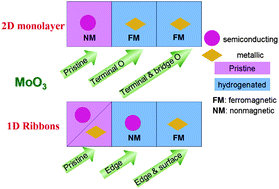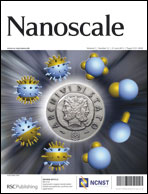Tuning electronic and magnetic properties of MoO3 sheets by cutting, hydrogenation, and external strain: a computational investigation†
Abstract
Density functional theory computations were performed to examine the electronic and magnetic properties of MoO3 two-dimensional (2D)


 Please wait while we load your content...
Please wait while we load your content...